Our cervical spine, you know it as your neck, is a common source of pain. The seven vertebrae and surrounding muscles that make up our neck have a complicated job. They need to allow a complex range of motion, all the while supporting our head, which weighs 10-11 pounds. No wonder over 70 percent of people complain of neck pain at some point in their lives.
At Comprehensive Neurosurgery, Dr. Michael Turner can perform various surgical procedures, including the latest minimally invasive methods to correct neck problems caused by nerve compression and degenerating cervical discs.
What causes Neck Pain?
The neck can be vulnerable to injuries and conditions that cause pain and restrict motion. These can be as simple as sleeping in an awkward position to as serious as herniated discs causing nerve compression. Osteoarthritis (otherwise known as wear and tear arthritis) is a common cause of chronic neck pain.
Here are some common causes for neck pain:
- Worn joints — Osteoarthritis affects the cervical spine just as it does the lumbar spine. Your neck joints tend to wear down with age, and the cartilage that provides the cushion between your vertebrae deteriorate. As a response, your body forms bone spurs that affect motion and can push on nerve roots.
- Muscle strains — Overuse of your neck muscles, such as when you’re hunched over a laptop for many hours, is the most common cause of neck pain. The muscles can strain and over time develop knots. Even minor position issues, such as reading in bed with an oddly positioned pillow, can strain your neck muscles.
- Nerve compression — Although you hear of herniated discs more in the lumbar spine, the cervical discs can herniate, as well. This is when the soft inner disc material pushes outward through the outer shell. This will often push on an adjacent nerve that is branching out from the spinal cord. Bone spurs also can place pressure on these nerves.
- Injury — When your head is jerked backwards and then recoils forward — whiplash — this strains the soft tissues of the neck. Whiplash is common in rear-end auto crashes. Contact sports can also cause whiplash.
- Disease — Certain diseases, such as rheumatoid arthritis or cancer, can cause chronic neck pain.
Examples of Neck Pain:
Like all pain across our bodies, neck pain can be categorized by its duration.
- Acute pain: Pain that a person experiences instantly, such as when you make a movement or use a position that strains the muscles in the neck.
- Chronic pain: Ongoing pain that wouldn’t likely involve an injury, per se, but is probably the result of some sort of developing problems, such as bone spurs that are pressing on a nerve root exiting the cervical spine.
Short of traumatic injuries, Dr. Turner usually is called in for cases of chronic neck pain that requires surgery to alleviate the compression.
What are the common symptoms with Neck Pain?
Neck pain is pretty straightforward. Signs and symptoms include:
- Decreased ability to move your head
- Burning pain when moving the head in certain positions
- Pain that increases when the head is held in one place for a long time, such as when driving
- Muscle tightness
- Muscle spasms
- Headaches
Non-Surgical Treatment Options for Neck Pain:
As with all cases of neurosurgery, except for extreme trauma, the first treatment approaches are non-surgical. With the neck, non-surgical treatments can usually be effective within two to three weeks. Here are some common options:
- Medication — Because our necks are involved with most movements we make, pain can be tough to avoid. Prescription pain medication could be necessary here on a short-term basis. Muscle relaxants and tricyclic antidepressants may also be used.
- Physical therapy — Many cases of chronic neck pain can be tied to a person’s poor posture. A physical therapist can teach you correct posture, alignment and neck-strengthening exercises. Heat, ice, electrical stimulation, and other treatments can also be used here.
- Transcutaneous electrical nerve stimulation (TENS) — This is a growing area of non-surgical treatment. Electrodes are placed on the skin near the painful areas. They deliver tiny electrical impulses that can relieve pain.
- Traction — This sounds like an old school treatment approach, but the use of weights, pulleys, or an air bladder can be effective for gently stretching the neck under the supervision of a doctor or physical therapist. This can be helpful when compression of a nerve root is the cause of the pain.
- Immobilization — Soft surgical collars can relieve pain by taking pressure off the structures of the neck. But these cannot be used more than three hours at a time.
What kinds of surgery are used for Chronic Neck Pain?
Conditions that may require surgery are often the result of an injury or are due to age-related degenerative changes, such as osteoarthritis or degenerative disc disease. These injuries and degenerative changes can lead to herniated discs and to the formation of bone spurs in your neck vertebrae.
Both of these can place pressure on your nerve roots exiting the spinal canal or on the spinal cord itself. This will lead to pain, numbness, or weakness in the neck or in the area served by the impacted nerves.
These are common surgeries Dr. Turner may perform on the neck. This isn’t an exhaustive list:
Anterior Cervical Discectomy and Fusion (ACDF)
This is the most common surgery for neck pain. It is a procedure that removes a damaged disc in order to relieve the pressure on a nerve root or the spinal cord. This is often used when patients are having significant arm pain and possible weakness in a hand or their arm. This can lead to permanent nerve damage.
This surgery is usually done with an incision in the front of the neck, which avoids the spinal cord, nerves, and the strong neck muscles. The herniated disc is removed. Bone, a cage, or other material is placed to maintain the spacing, and then bone graft material is placed throughout.
The two vertebrae above and below the removed disc are then fixed in place with metal plates and screws. The bone graft material then grows around all of the materials and fuses the two vertebrae into a single piece.
Laminectomy Decompression
Laminectomy is one decompression surgery where Dr. Turner enters through an incision made in the back above the affected vertebrae. Using minimally invasive techniques, small tools are used to remove the lamina, the boney arch on the back part of the vertebrae. This creates more room for the compressed spinal cord, which is usually being compressed by bone spurs that have developed due to degenerative disc disease. Patients needing this surgery usually have pain, weakness or numbness that radiates down into their arms.
Laminotomy
Similar to a laminectomy, a laminotomy removes only a portion of the lamina. In a laminoplasty, Dr. Turner addresses bone spurs and/or disc herniation by cutting through the lamina, but not removing any of it. This creates space in the spinal canal. Any bone spurs are removed and small plates are attached to the lamina to enlarge the overall dimension of the spinal canal, relieving compression.
Foraminotomy
A foraminotomy is another minimally invasive decompression procedure that aims to relieve nerve root compression that is occurring in the neuroforamina. These are the nerve passageways on the sides in the gap between the vertebrae.
Bone spurs can form in the neuroforamina, pressing on the nerve roots and causing pain. Dr. Turner enters through the back, separating the muscles to reach the spine. He removes the bones spurs and any other tissue in the neuroforamina, hence the name foraminotomy.
What happens if Neck Pain is left untreated?
Chronic neck pain is not to be ignored. That’s because chronic neck pain that isn’t responding to rest, PT, and anti-inflammatory medication is usually a sign that you have nerve compression, either from bone spurs pushing on nerve roots or the spinal cord or a herniated or bulging disc.
This compression is dangerous if left untreated because it can cause permanent nerve damage, which will result in loss of function in the hands, fingers, or the area the nerve is servicing. This damage is irreversible.
Comprehensive Neurosurgery Reviews
"It’s been 2 years and despite being a very complicated case my spine fusion went so well, Dr Turner and his whole staff care so much about you. I’ve referred him and will continue to do so, he is a remarkable surgeon"
"Dr. Turner went above and beyond and not only fused my husbands neck but made sure our family was doing well all the way around."
"Dr. Turner ‘s team continues to e be very helpful. Dr. Turner was willing to review my films several times till he found the area that was most affected. I feel this team was a true blessing in a freak accident."
Schedule Your Consultation for Neck Pain Today!
Interested in scheduling a consultation for your neck pain with Comprehensive Neurosurgery? Give us a call at 972.394.4600 schedule your consultation with Lewisville neurosurgeon Michael Turner today! Our practice serves Lewisville, TX & the greater Dallas area.


